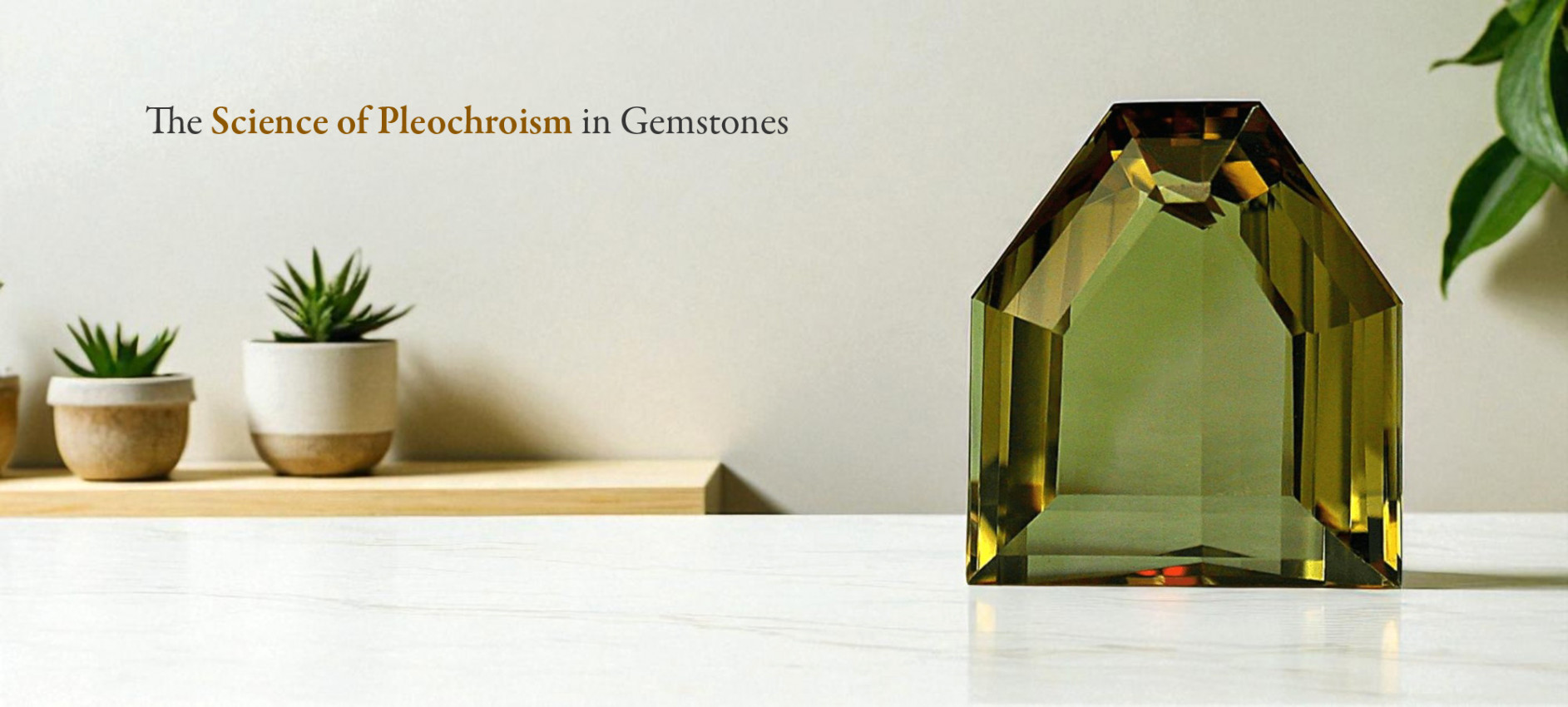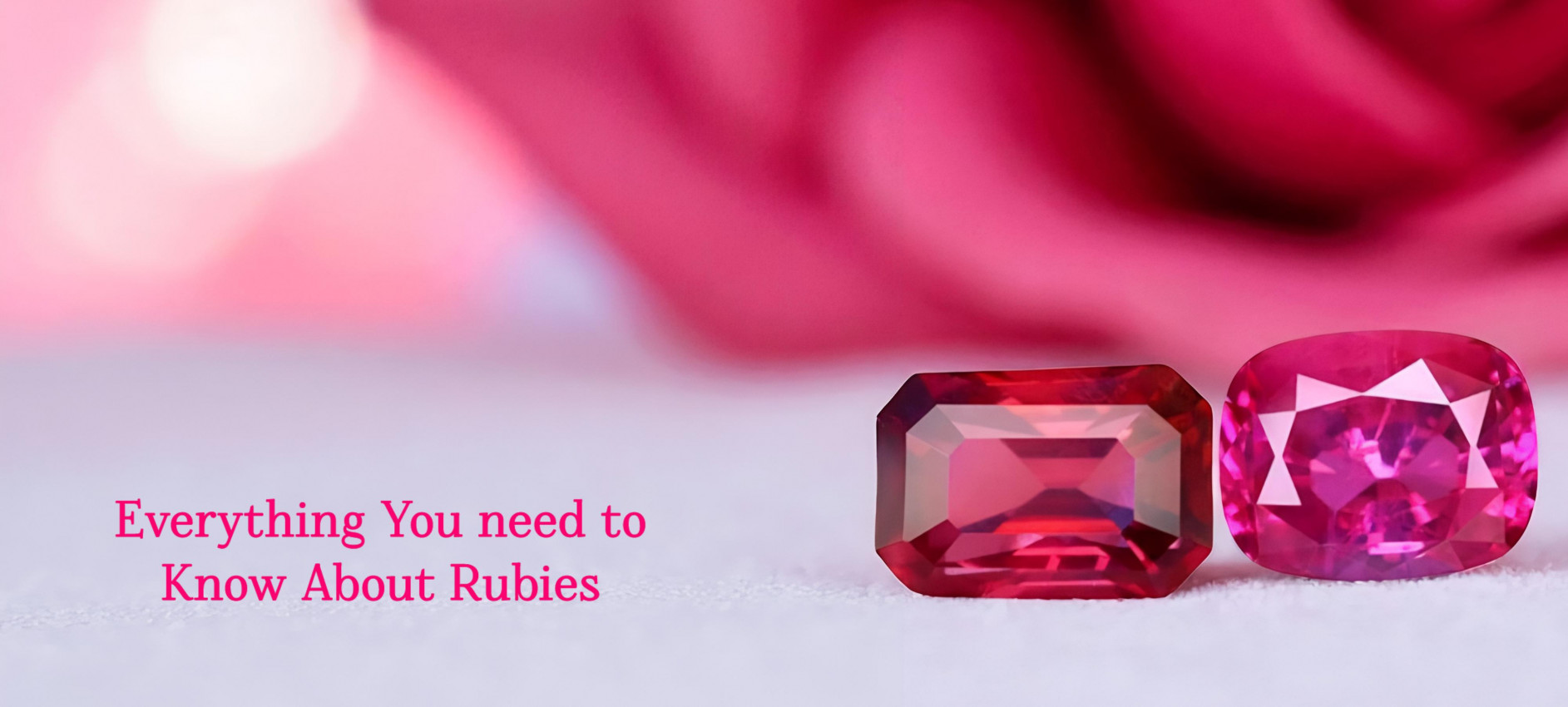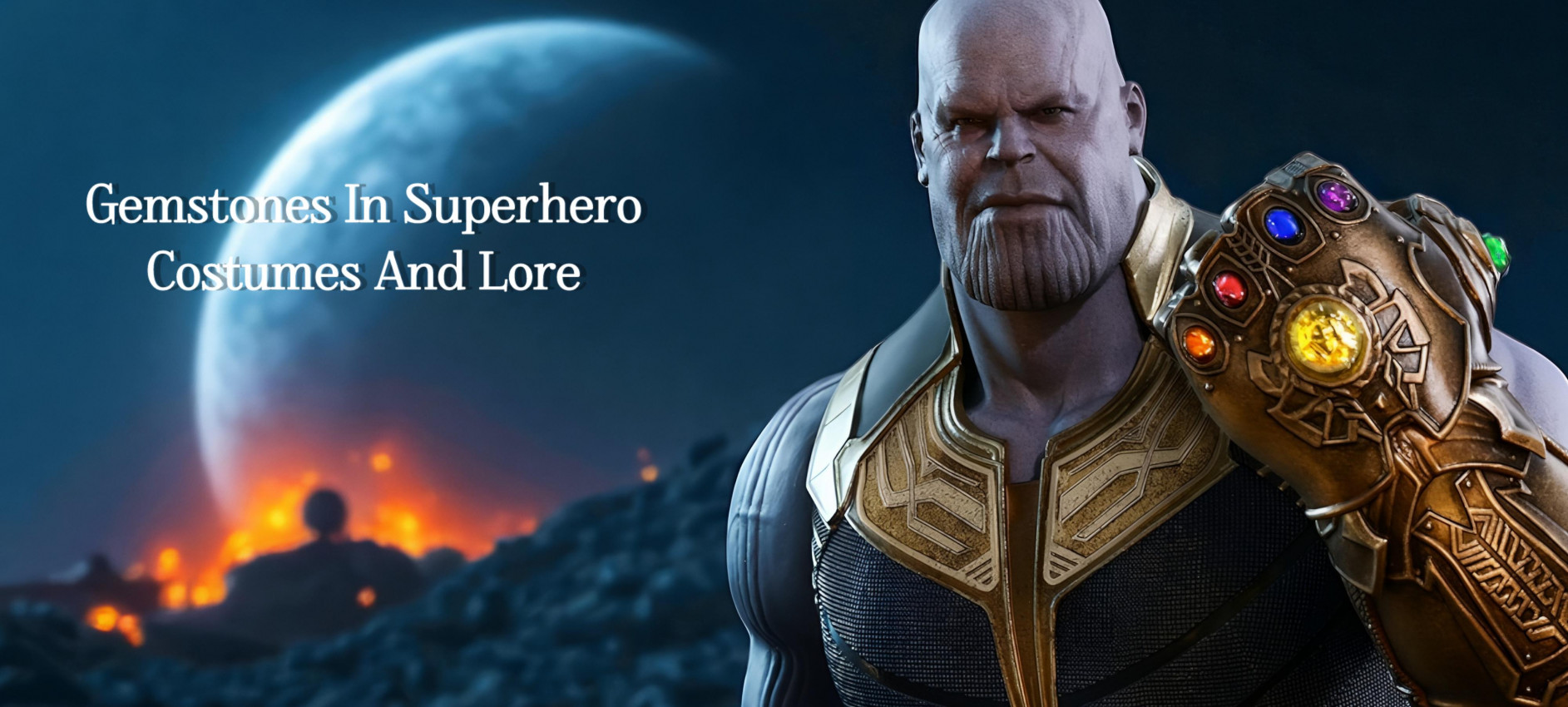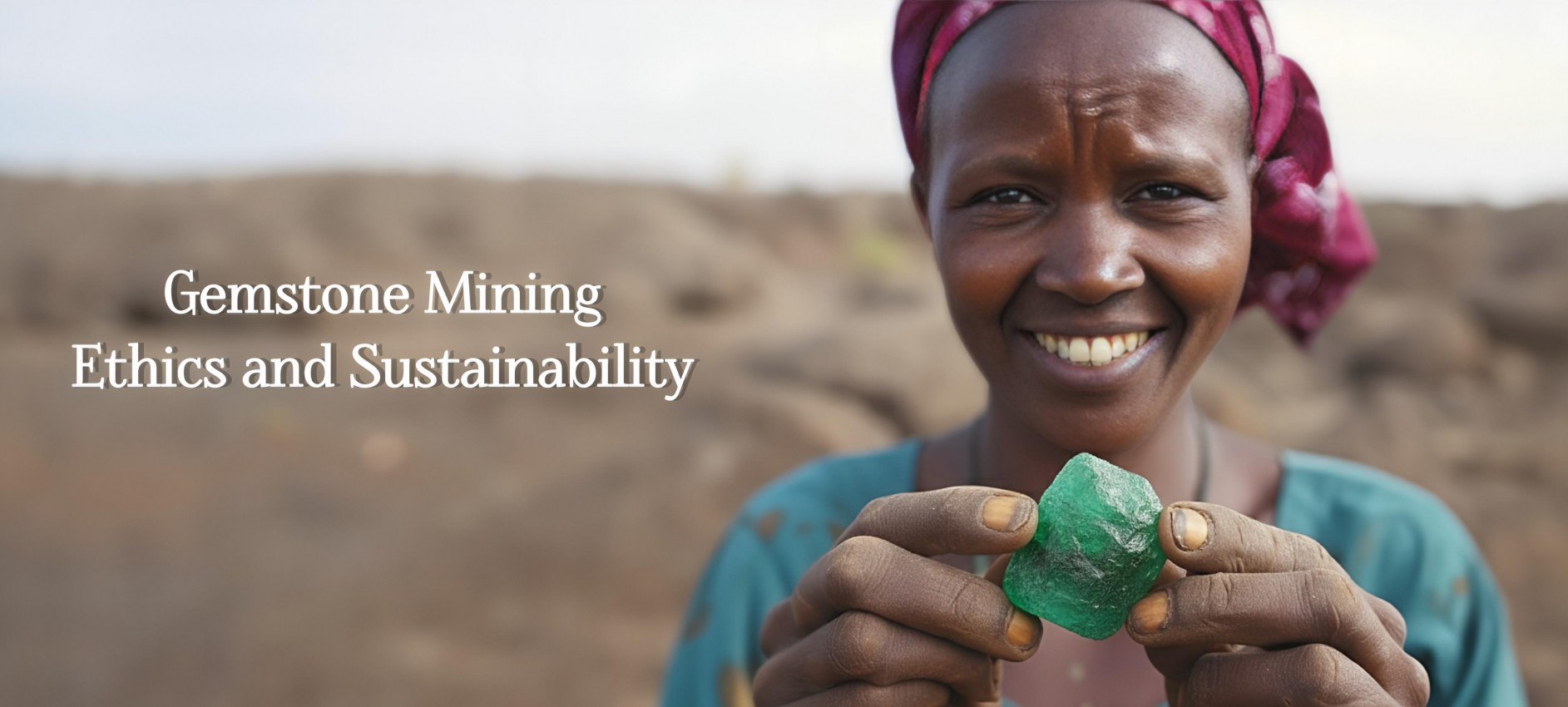 Categories
Categories 
Gems have delighted us with their brightness; however, there are some gems that have a mysterious quality beyond glitter, that of pleochroism. It is like a magical gem that changes colour according to the way you look. But this is no magic, it is moving physics at its best.
The phenomenon of pleochroism means that a gemstone will exhibit two or three different colours depending on which direction you look at it from, and it is perhaps the most fascinating aspect of gemology.
So, how does this colour-changing phenomenon work? What is the science behind the colour-changing jewellery? The answers lie in what defines the beauty, value and identity of a gemstone. Know about the pleochroic gems in detail.
The term pleochroism originally comes up from the Greek words pleo (more) and chroos (color), and it corresponds to the ability of a gemstone to exhibit various colors based on the direction of light and the angle of view of a viewer.
Color change (which is conditioned by the light conditions) and color zoning (the effect of uneven distribution of chemicals) are different from pleochroism. Rather, pleochroism is a direct consequence of the light's interaction with the internal structure of a gem.
Gem pleochroism have two distinct varieties:
Dichroism: Two colours in sight (e.g. tourmaline, kunzite)
Trichroism: Three colors visible (e.g. tanzanite, andalusite)
Pleochroism is seen in anisotropic crystals, which are those whose atomic structure is different along various axes. When light passes into such a crystal, it separates into polarised rays that travel at different speeds and are absorbed differently depending on direction. Such selective absorption makes the viewer see various colours when looking from different directions or angles.
Moreover, there is no pleochroism in isotropic gems such as diamond or garnet stone, which have a uniform internal structure. They absorb light equally in all directions, producing one constant colour.
Read More - How to Spot a Fake Gemstone: 6 Red Flags Every Buyer Should Know
The most alluring pleochroic stones are:
Tanzanite: Shows Blue, violet and burgundy depending on orientation.
Iolite: Changes in deep blue to light yellow or transparent.
Andalusite: Appears as olive green, reddish, red-brown and gold.
Kunzite: Pink to violet in different directions of the view.
Tourmaline: It generally appears in green or brown or pink, and red.
The power of pleochroism is variable- some gems have slight variations, some have eye-popping colour variations, even to the extent that it can be seen with the naked eye.
Pleochroism is not merely a phenomenon of scientific interest, but a design idea. Gem cutters (lapidaries) may deliberately angle pleochroic stones to reduce or maximise the effect. For instance:
But pleochroism may also be tricky. Unless carefully cut, a gem can look dirty or irregular in colour. That is why in lapidary work, knowledge of the optic axis and crystal orientation is vital.
Also Read - Why Custom-Made Jewellery Is Gaining Popularity in Modern Times?
Pleochroism is an aesthetic as well as a purely scientific aspect when seen. The effect is commonly available to sight in gems that are strongly pleochroic, but may be discounted or verified by means of merely simple tools and techniques:
Turn the gem: Under a steady source of good light, turn a cut gem. Find a visible colour change with a change in viewing angles. Good testers are Tanzanite, iolite, and andalusite.
Dichroscope: This handheld gemological tool reveals two or three distinct pleochroic colours simultaneously by isolating polarised light. It is particularly practical in subdued pleochroism that is not obvious or visually apparent.
Testing under magnification: A loupe or microscope, and the proper lighting, can also reveal directional color changes, particularly on faceted stones, but also on some round stones, because some angles enhance the effect more than others.
Daylight vs. LED/halogen Lighting: Very strong pleochroism may show a minor variation under daylight light as opposed to LED or halogen lamps, and thus it is best to test it under a variety of light sources.
As much as they all relates to color variation, pleochroism, color change as well as color zoning are caused by totally different factors and are commonly misinterpreted. The following is the way they can be differentiated:
Feature | Pleochroism | Color Change | Color Zoning |
Cause | Directional light absorption | Light source (daylight vs. artificial) | Uneven chemical distribution during growth |
Trigger | Viewing angle | Type of lighting | Internal structure |
Visibility | Visible when the gem is rotated | Visible under different lights | Visible within static areas of the gem |
Examples | Tanzanite, Iolite, Andalusite | Alexandrite stone, Garnet | Amethyst stone, Sapphire, Fluorite |
Pleochroism presents angle-sensitive colour.
Color change demonstrates color with reference to light.
Color zoning exhibits growth differences, presenting bands or patches.
Knowledge of these variations enables the gemologist to consider fakes better, and consumers enjoy specialness more.
Know More - Why do Gemstones Hold an Important Place In Indian Culture?




From Kryptonite to Infinity Stones: Gemstones Behind Iconic Superheroes
September 22nd, 2025